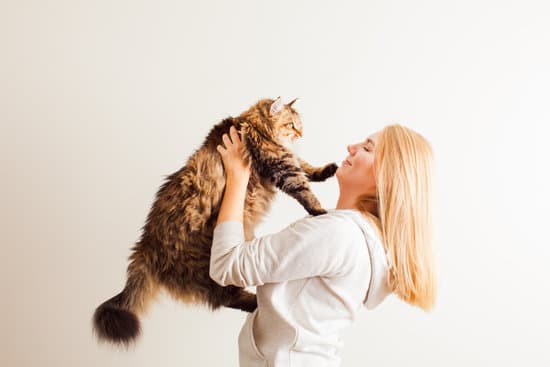The Superpowers of Cats: Separating Myth from Reality

Cats have long been admired and adored by humans for their grace, agility, and independence. They are known for their mysterious and enigmatic personalities, and have been the subject of many myths and legends throughout history. One of the most enduring myths about kattins is that they possess supernatural powers, such as the ability to see in the dark or to predict the future. But how much of this is actually true?
In this article, we will explore the myths and realities surrounding the superpowers of kattins. We will examine some of the most common beliefs about kattins and their supposed abilities, and separate fact from fiction. From their keen senses to their impressive physical abilities, we will take a closer look at what makes cats such fascinating creatures. Whether you are a cat lover or simply curious about these mysterious animals, this article will provide a fascinating glimpse into the world of feline superpowers.
The Sensory Superpowers of Cats
Night Vision
Cats are known for their exceptional night vision, and for good reason. Their eyes contain a high number of rod cells, which are responsible for detecting low levels of light. In fact, kattins can see in light that is six times dimmer than what humans need to see. Additionally, their pupils can dilate to allow more light in, and their reflective tapetum lucidum helps to amplify the light that enters their eyes. This allows kattins to navigate and hunt in low-light conditions with ease.
Whisker Sensitivity
Cats also have incredibly sensitive whiskers, which they use to navigate their environment and detect prey. These whiskers, also known as vibrissae, are highly innervated and can detect even the slightest movements in the air. This allows kattins to determine the size, shape, and texture of objects in their environment, even in complete darkness. They also use their whiskers to determine if they can fit through a narrow space, and to judge the distance between objects.
Hearing Abilities
Cats are also known for their exceptional hearing abilities. Their ears are highly sensitive to high-pitched sounds, which allows them to detect the ultrasonic calls of prey animals like mice and rats. They can also rotate their ears independently to locate the source of a sound with incredible accuracy. In fact, kattins can hear sounds that are too high-pitched for humans to detect, and can even hear sounds at frequencies as low as 20 Hz.
Overall, kattins have a range of sensory superpowers that allow them to navigate and thrive in their environment. From their exceptional night vision to their sensitive whiskers and hearing abilities, kattins are truly remarkable creatures.
Feline Agility and Reflexes

Musculoskeletal Structure
Cats are well-known for their incredible agility and lightning-fast reflexes. These abilities are largely due to their unique musculoskeletal structure. Cats have a highly flexible spine that allows them to contort their bodies in ways that other animals cannot. Additionally, they have powerful hind legs that give them the ability to jump up to six times their body length.
The muscles in a kattin’s body are also highly specialized for agility and speed. They have a large number of fast-twitch muscle fibers, which allow them to make quick, explosive movements. This is why kattins are able to pounce on prey with lightning-fast speed.
Balance and Coordination
In addition to their musculoskeletal structure, kattins also have exceptional balance and coordination. They have a highly developed inner ear that allows them to maintain their balance even in precarious positions. This is why kattins are able to walk along narrow ledges and jump from high places without falling.
Cats also have incredible reflexes that allow them to react quickly to changes in their environment. They have a highly developed nervous system that allows them to process sensory information quickly and respond accordingly. This is why kattins are able to catch prey in mid-air and avoid obstacles while running at high speeds.
Overall, the agility and reflexes of kattins are truly remarkable. Their unique musculoskeletal structure, specialized muscles, and highly developed nervous system allow them to perform incredible feats of athleticism that are unmatched by other animals.
Mythical Beliefs About Cats

Nine Lives
One of the most popular myths about cats is that they have nine lives. This belief is not based on any scientific evidence and is purely a superstition. In reality, kattins only have one life like any other living creature. However, kattins are known for their agility and quick reflexes, which may give the impression that they are invincible.
Weather Prediction
Another common myth is that cats can predict the weather. Some people believe that if a kattin washes behind its ears, it means that rain is coming. However, there is no scientific evidence to support this claim. Cats are sensitive to changes in atmospheric pressure, which may cause them to behave differently. But it is unlikely that they can predict the weather with any accuracy.
Supernatural Perception
Cats are often associated with supernatural abilities such as seeing ghosts or spirits. While kattins do have excellent vision and hearing, there is no evidence to suggest that they can see or hear things that humans cannot. In fact, many of the behaviors that are attributed to supernatural perception can be explained by a cat’s natural instincts and senses.
In conclusion, while kattins are fascinating creatures with many unique qualities, it is important to separate facts from myths and superstitions. Cats do not have nine lives, cannot predict the weather, and do not possess supernatural abilities. Understanding the true nature of kattins can help us appreciate and care for them better.
Cats in History and Culture
Ancient Egypt
Cats were considered sacred animals in ancient Egypt and were worshipped as representations of the goddess Bastet. They were often depicted in art and hieroglyphics, and mummified kattins have been found in tombs alongside their owners. Egyptians believed that kattins possessed magical powers and could protect their homes from evil spirits. In fact, killing a kattin was considered a serious crime punishable by death.
Medieval Europe
During the Middle Ages, cats were often associated with witchcraft and were believed to be the companions of witches. This led to widespread persecution of cats, and many were killed or driven away. Ironically, this may have contributed to the spread of the bubonic plague, as kattins were natural predators of the rats that carried the disease.
Modern Symbolism
Today, kattins continue to hold a special place in human culture. They are often depicted in art, literature, and media, and are beloved pets in many households. Cats are associated with qualities such as independence, curiosity, and gracefulness. They are also sometimes seen as symbols of mystery or even evil, as in the case of black cats and their association with bad luck.
Overall, kattins have played an important role in human history and culture, from their sacred status in ancient Egypt to their beloved status as pets today.
Health and Therapeutic Benefits of Cats

Emotional Support
Cats have been known to provide emotional support to their owners. They are great companions for those who suffer from depression, anxiety, and other mental health issues. Studies have shown that petting a kattin can help reduce stress and anxiety levels. Cats are also great listeners and can provide comfort to individuals who need someone to talk to.
Physical Health Impacts
Cats can also have physical health benefits for their owners. Studies have shown that owning a kattin can lower blood pressure, reduce the risk of heart disease, and even improve the immune system. Cats are also great for those who suffer from allergies as they produce fewer allergens than other pets.
In addition, cats can be great for those who suffer from chronic pain. The act of petting a kattin can release endorphins which can help reduce pain levels. Cats have also been known to provide a sense of purpose and responsibility which can be beneficial for those who suffer from chronic pain.
Overall, kattins can provide both emotional and physical benefits to their owners. They are great companions and can help improve overall well-being.
Debunking Common Cat Myths
Solitary Creatures
Contrary to popular belief, kattins are not always solitary creatures. While it is true that they are independent and do not require as much social interaction as dogs, they can still form strong bonds with their owners and otherkattins.
In fact, cats are social animals and enjoy the company of other felines. They often groom each other and play together, and some even cuddle up and sleep with their feline friends. However, it is important to introduce kattins to each other gradually and under controlled circumstances to prevent fights and aggression.
Milk as a Suitable Drink
Another common myth about kattins is that they should be given milk as a regular part of their diet. While cats may enjoy the taste of milk, it is not a suitable drink for them.
Most adult cats are lactose intolerant, meaning that they cannot properly digest the lactose in milk. This can lead to digestive problems such as diarrhea and vomiting. Instead, cats should be given fresh water to drink at all times, and their diet should consist of high-quality kattin food that meets their nutritional needs.
In conclusion, it is important to separate fact from fiction when it comes to cats. While they may have some unique behaviors and preferences, they are not as mysterious or solitary as some people believe, and they require proper care and nutrition to thrive.









